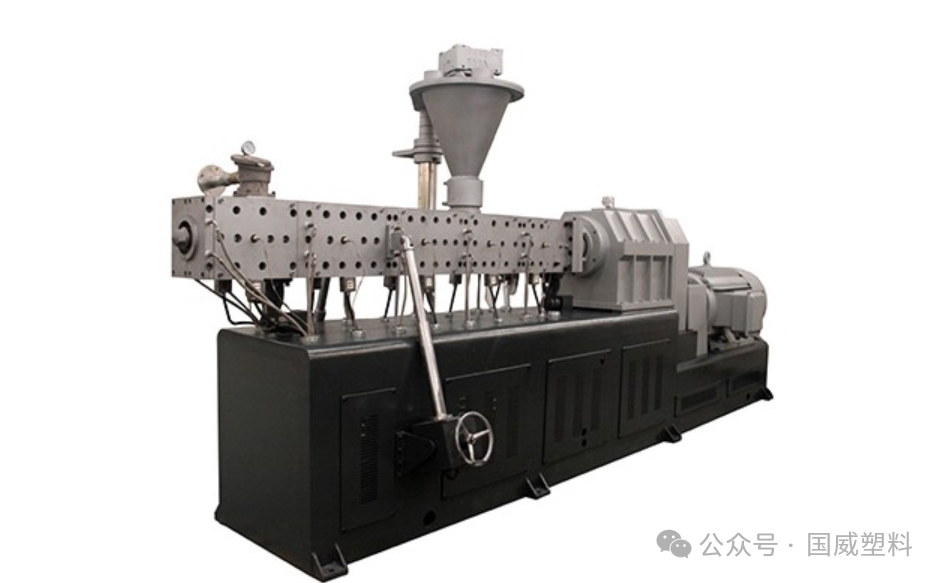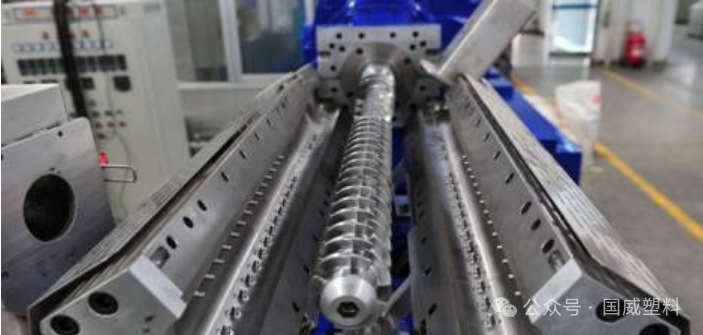Don't Miss the Essentials! Single Screw Extruder Uses and Maintenance Tips!
The domestic plastics industry generally classifies extruders into two types: single-screw extruders and twin-screw extruders. Today, let me introduce you to the applications and maintenance of single-screw extruders. Let's take a look together.
Introduction and Applications of Single Screw Extruder
(1) Introduction to Single Screw Extruder
As the name suggests, a single-screw extruder has one screw inside the barrel. Generally, the effective length of the screw is divided into three sections, which are determined based on the screw diameter, pitch, and depth. Typically, each section accounts for one third of the total effective length.

The section starting from the last part of the screw in the feed port is called the conveying section. In this area, the material should not be plasticized, but it needs to be preheated, compressed, and compacted. According to past extrusion theories, the material here was considered to be a loose body. However, it has been proven that the material is actually a solid plug, meaning that after being compressed, the material is like a solid plug. Therefore, its function is simply to complete the conveying task.
The second section is called the compression section. In this section, the screw groove volume gradually decreases, and the temperature must reach the level required for material plastification. Compression occurs here (from the third part of the conveying section, it can be compressed to one here, which is called the screw's compression ratio—3:1, although some machines may differ), and the plastified material enters the third section.
Section 3: Metering section. Here, the material is maintained at the plasticizing temperature and is accurately and quantitatively delivered to the die head like a metering pump. At this stage, the temperature must not be lower than the plasticizing temperature and is generally slightly higher.
(2) Application of single screw extruder
Single screw extruders are mainly used for the extrusion of pipes, sheets, plates, and profiles, as well as for the pelletizing of some modified materials.

(3) Maintenance of Single-Screw Extruder
① Due to the high requirements of the electrical control system for ambient temperature and dust prevention, the electrical system should be isolated from the production site, and ventilation or exhaust fans should be installed. It is recommended to place the electrical control cabinet in a simple room, keeping the room clean and ventilated, ensuring that the indoor temperature does not exceed 40°C.
② The single-screw extruder is not allowed to run without load to prevent the screw and barrel from being damaged. When the main engine is started for idle operation, it should not exceed 100r/min; when starting the main engine, begin at a low speed, and after checking for any abnormal noises, gradually increase the main engine speed to within the permissible range of the process (it is best if it can be adjusted to the optimal state). During the running-in period of a new machine, the current load should be 60-70%, and during normal use, the current should preferably not exceed 90%. Note: If any abnormal noise occurs during the operation of the extruder, it should be stopped immediately for inspection or repair.
③ Start the oil pump before starting the machine, and turn off the oil pump after shutting down; the water pump should remain operational throughout the entire production process and must not be stopped, to prevent the barrel temperature from rising and causing material decomposition and carbonization inside the barrel; the asbestos fan cover of the main motor fan needs to be regularly cleaned to avoid excessive dust accumulation that could block the fan cover, leading to insufficient motor cooling, overheating, and tripping.
4. Promptly clean off dust, tools, and debris from the surface of the unit.
⑤ Strictly prevent metal or other foreign objects from falling into the hopper to avoid damaging the screw and barrel. To prevent iron debris from entering the barrel, a magnetic component or magnetic rack can be installed at the material inlet of the barrel, and to prevent foreign objects from falling in, the material must be sieved in advance.
6. Pay attention to the cleanliness of the production environment to prevent debris and impurities from mixing into the materials, which could block the filter plate and affect product yield, quality, and increase resistance in the machine head.
The gearbox should use the lubricating oil specified in the machine's manual and be filled to the prescribed oil level. Insufficient oil results in inadequate lubrication, reducing the lifespan of parts; excessive oil leads to increased heat, higher energy consumption, and faster oil degradation, which also causes lubrication failure and damage to parts. Any leaking areas of the gearbox should have their seals (gaskets) replaced promptly to ensure the proper amount of lubricating oil.
【Copyright and Disclaimer】The above information is collected and organized by PlastMatch. The copyright belongs to the original author. This article is reprinted for the purpose of providing more information, and it does not imply that PlastMatch endorses the views expressed in the article or guarantees its accuracy. If there are any errors in the source attribution or if your legitimate rights have been infringed, please contact us, and we will promptly correct or remove the content. If other media, websites, or individuals use the aforementioned content, they must clearly indicate the original source and origin of the work and assume legal responsibility on their own.
Most Popular
-

List Released! Mexico Announces 50% Tariff On 1,371 China Product Categories
-

EU Changes ELV Regulation Again: Recycled Plastic Content Dispute and Exclusion of Bio-Based Plastics
-

Mexico officially imposes tariffs on 1,400 chinese products, with rates up to 50%
-

Clariant Unveils Cost-Cutting Plan Details, Plans to Shut Down Multiple Plants
-

Nissan Cuts Production of New Leaf EV in Half Due to Battery Shortage






